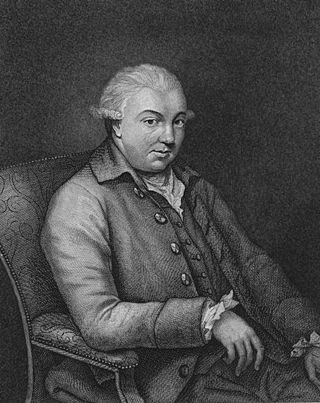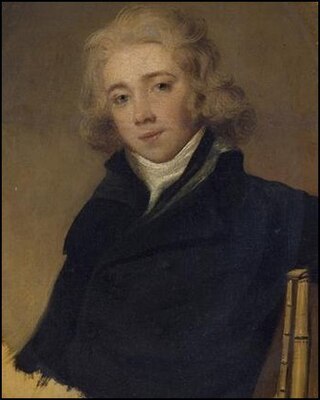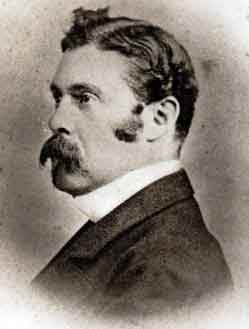
The Symphony No. 9 in C major, D 944, known as The Great, is the final symphony completed by Franz Schubert. It was first published by Breitkopf & Härtel in 1849 as "Symphonie / C Dur / für großes Orchester" and listed as Symphony No. 8 in the New Schubert Edition. Originally called The Great C major to distinguish it from his Symphony No. 6, the Little C major, the subtitle is now usually taken as a reference to the symphony's majesty. Unusually long for a symphony of its time, a typical performance of The Great lasts around one hour when all repeats indicated in the score are taken. The symphony was not professionally performed until a decade after Schubert's death in 1828.

The Symphony No. 3 in A minor, Op. 56, MWV N 18, known as the Scottish, is a symphony by Felix Mendelssohn, composed between 1829 and 1842.

Thomas Alexander Erskine, 6th Earl of Kellie, styled Viscount Fentoun and Lord Pittenweem until 1756, was a Scottish musician and composer whose considerable talent brought him international fame and his rakish habits notoriety, but nowadays is little known. Recent recordings of his surviving compositions have led to him being re-evaluated as one of the most important British composers of the 18th century, as well as a leading exponent of Scotland's music.

Woldemar Bargiel was a German composer and conductor of the Romantic period.
Jacques-Nicolas (Jaak-Nicolaas) Lemmens, was an organist, music teacher, and composer for his instrument.

The Cello Concerto of Pyotr Ilyich Tchaikovsky is a conjectural work based in part on a 60-bar fragment found on the back of the rough draft for the last movement of the composer's Sixth Symphony, the Pathétique. In 2006, Ukrainian composer and cellist Yuriy Leonovich completed the work.

The Andante and Finale is a composition for piano and orchestra that was reworked by Sergei Taneyev from sketches by Pyotr Ilyich Tchaikovsky for the abandoned latter movements of his single-movement Piano Concerto No. 3 in E-flat, Op. 75.

Hyacinthe Jadin was a French composer who came from a musical family. His uncle Georges Jadin was a composer in Versailles and Paris, along with his father Jean Jadin, who had played bassoon for the French Royal Orchestra. He was one of five musical brothers, the best known of whom was Louis-Emmanuel Jadin.
Pyotr Ilyich Tchaikovsky's Symphony in E-flat was commenced after Symphony No. 5, and was intended initially to be the composer's next symphony. Tchaikovsky abandoned this work in 1892, only to reuse the first movement in the single-movement Third Piano Concerto, Op. 75, first performed and published after his death in 1895. Two other movements were reworked for piano and orchestra by Sergei Taneyev as the Andante and Finale, which was published as Tchaikovsky's Op. posth. 79 in 1897.
Franz Ries was a Romantic German violinist and composer, son of Hubert Ries. He studied at the Paris Conservatory. He also worked in the publishing business.
An organ concerto is an orchestral piece of music in which a pipe organ soloist is accompanied by an an orchestra, although some works exist with the name "concerto" which are for organ alone.

The Serenade for Orchestra No. 9 in D major K. 320, Posthorn, was written by Wolfgang Amadeus Mozart in Salzburg, in 1779. The manuscript is dated 3 August 1779 and was intended for the University of Salzburg's "Finalmusik" ceremony that year.

Marie-Alexis de Castillon de Saint-Victor was a French composer.

The Twelve Grand Concertos, Op. 6, HWV 319–330, by George Frideric Handel are concerti grossi for a concertino trio of two violins and cello and a ripieno four-part string orchestra with harpsichord continuo. First published by subscription in London by John Walsh in 1739, they became in a second edition two years later Handel's Opus 6. Taking the older concerto da chiesa and concerto da camera of Arcangelo Corelli as models, rather than the later three-movement Venetian concerto of Antonio Vivaldi favoured by Johann Sebastian Bach, they were written to be played during performances of Handel's oratorios and odes. Despite the conventional model, Handel incorporated in the movements the full range of his compositional styles, including trio sonatas, operatic arias, French overtures, Italian sinfonias, airs, fugues, themes and variations and a variety of dances. The concertos were largely composed of new material: they are amongst the finest examples in the genre of baroque concerto grosso.
The Musette, or rather chaconne, in this Concerto, was always in favour with the composer himself, as well as the public; for I well remember that HANDEL frequently introduced it between the parts of his Oratorios, both before and after publication. Indeed no instrumental composition that I have ever heard during the long favour of this, seemed to me more grateful and pleasing, particularly, in subject.

Felix Mendelssohn's six Organ Sonatas, Opus 65, were published in 1845. Mendelssohn's biographer Eric Werner has written of them: "Next to Bach's works, Mendelssohn's Organ Sonatas belong to the required repertory of all organists."
The Petite Suite is a suite of seven piano pieces, written by Alexander Borodin, and acknowledged as his major work for the piano. It was published in 1885, although some of the pieces had been written as far back as the late 1870s. After Borodin's death, Alexander Glazunov orchestrated the work, and added his orchestration of another of Borodin's pieces as an eighth number.
Sonatas, duos and fantasies by Franz Schubert include all works for solo piano by Franz Schubert, except separate dances. They also include a number of works for two players: piano four hands, or piano and a string instrument.

Haydn Symphonies is an album recorded by the Oregon Symphony under the direction of Carlos Kalmar, released by Pentatone on April 7, 2017. The albums was recorded at Portland, Oregon's Arlene Schnitzer Concert Hall in 2013, and features three symphonies by Joseph Haydn: Symphony No. 53 in D Major, Symphony No. 64 in A Major, and Symphony No. 96 in D Major.
The Symphony No. 3 in B minor by the Ukrainian composer Borys Lyatoshynsky was completed in 1951, with the final movement themed "Peace will conquer war." The symphony was first performed in Kyiv on 23 October 1951, by the Kyiv Philharmonic, conducted by Natan Rakhlin. Criticised by the Soviet authorities on ideological grounds, the composer was forced to rework the symphony, and to remove the subtitle of the finale. The first performance of the revised version took place in Leningrad in 1955.











